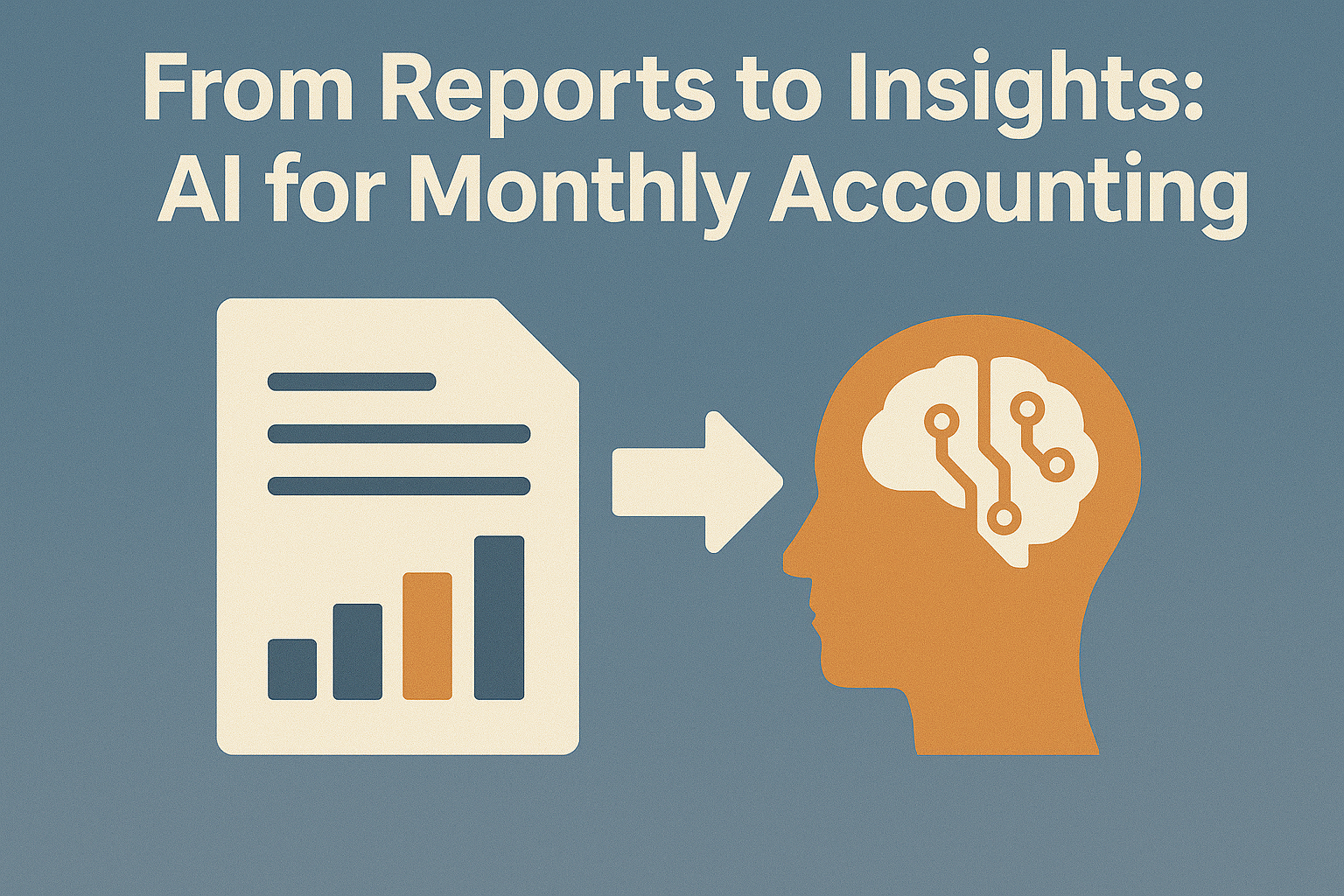
For years, monthly accounting has been about one thing: reporting. Businesses collect receipts, reconcile accounts, close their books — and then wait weeks or even months to understand what those numbers actually mean.
But in 2025, AI is transforming monthly accounting from a backward-looking reporting task into a forward-looking strategic tool. Instead of spending days crunching numbers, finance teams are now using AI to uncover trends, identify risks early, and make smarter decisions faster.
Let’s explore how AI is changing the way businesses approach monthly accounting — and why the right AI-powered tools can make financial insight available in real time.
In the traditional model, accounting is largely reactive. At the end of each month, teams spend hours (or days) pulling data from multiple sources — invoices, bank statements, receipts, payroll — and manually inputting it into spreadsheets or accounting software.
The result? Reports that tell you what happened, but not why it happened. By the time business leaders see the numbers, the opportunity to react has often passed. This model worked in a slower world, but today’s businesses need speed, accuracy, and insight.
AI turns monthly accounting on its head. Instead of waiting for the month to end, AI continuously processes and analyzes financial data as it comes in. Transactions are automatically categorized, invoices are matched, and cash flow is tracked in real time.
This shift allows business owners and finance teams to:
This isn’t about replacing accountants. It’s about empowering them to focus on strategy, not data entry.
One of the most time-consuming parts of monthly accounting is manual bookkeeping — entering invoices, reconciling bank transactions, and categorizing expenses.
With AI-driven tools like ccMonet, much of this work is automated. The system can read invoices, classify transactions, detect duplicates, and match them with the correct accounts — all in seconds.
On top of this, expert review ensures compliance and accuracy, creating a hybrid model where AI handles the routine and humans handle the exceptions. That means fewer errors, faster closes, and cleaner books.
Traditional financial reports are static snapshots — often produced long after the period ends. AI tools change that by providing dynamic dashboards that update in real time.
Business owners can see exactly how their company is performing:
This shift from static to living data gives leaders the power to act — not just analyze.
Beyond automation and dashboards, AI brings predictive power to monthly accounting. Instead of just reporting the past, AI can forecast the future.
For example:
This kind of forecasting was once only accessible to large corporations with dedicated finance teams. Now, thanks to AI, even small and mid-sized businesses can benefit from the same strategic clarity.
With AI taking over repetitive tasks, finance teams can finally focus on strategic insights rather than operational firefighting. Instead of rushing through the month-end close, they can:
This is the difference between being reactive and being proactive — and it’s one of the biggest advantages of AI in accounting.
Transitioning to AI doesn’t have to be overwhelming. Most businesses start with automating their bookkeeping and reconciliation processes, then layer on forecasting and reporting tools as they grow.
A smart place to start is with an AI-powered platform like ccMonet, which combines:
This creates a strong foundation for an AI-enabled finance function without requiring a large finance team or complex infrastructure.
Monthly accounting is no longer just about closing the books. It’s about opening up insights — using AI to guide decision-making, strengthen financial control, and create a clear path for growth.
Whether you’re a growing SME or scaling globally, AI-powered accounting gives you more than just reports — it gives you the clarity to act.
👉 Try ccMonet and turn your monthly reports into real-time financial intelligence.